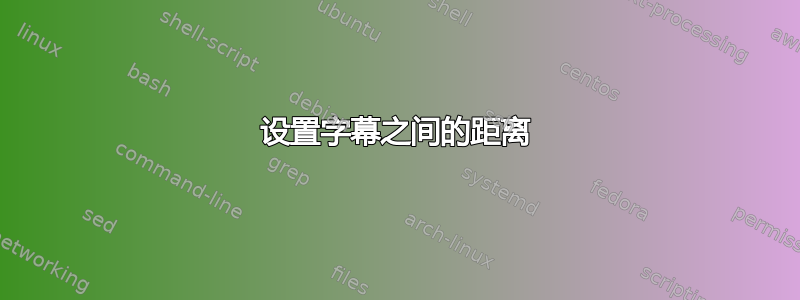
我对字幕的位置,特别是字幕之间的距离有疑问。
问题是我有两个相邻的图(通过minipage),都需要一个包含大量文本的标题。但是,如下图所示,它很快就变得不可读,所以我想在那里添加一些空格。
有人知道如何实现这一点吗?

实际代码
\begin{figure}
\begin{minipage}{.5\textwidth}
\includegraphics[scale=0.45]{3b_01.png}
\caption{Synchronisation map for the two coupled cells: blue points indicate that
the systems synchronise, red points indicate that the system does not. The map
is an average of three equal systems with each a different initial condition.
Gamma goes from 0 to 1 (each increment in y direction = 1/15 ) where as Tau goes
from 0 to 1 (each increment x direction = 1/60). }
\label{fig:3b_01}
\end{minipage}%
\begin{minipage}{.45\textwidth}
\includegraphics[scale=0.45]{3b_02.png}
\caption{Synchronisation map for the two coupled cells: blue points indicate that
the systems synchronise, red points indicate that the system does not.The map is
an average of three equal systems with each a different initial condition. Gamma
goes from 0 to 1 (each increment in y direction = 1/15 ) where as Tau goes from
0 to 1 (each increment x direction = 1/60). Notice how the different tolerance
leads to a larger area but with an equal shape }
\label{fig:3b_02}
\end{minipage}
\end{figure}
答案1
您可以在两个图形之间添加\hfil或\hfill(尝试您更喜欢的)。这会将两个图像“推”到边缘并在它们之间留出一些空白。
这是一个带有 的版本,minipage另一个带有subfigure的版本subcaption。如果您无法使用 ,则应\hfill查看\subcaptionbox此处的文档。如果您的图像确实有不同的高度,那么我的[t]对齐和 a[b]对齐看起来都不会很好,因为标题的长度确实不同。\subcaptionbox提供了一种管理此类情况的可能性。
% arara: pdflatex
\documentclass{article}
\usepackage[demo]{graphicx}
\usepackage{caption}
\usepackage{subcaption}
\usepackage{siunitx}
\begin{document}
\begin{figure}
\begin{minipage}[t]{.5\textwidth}
\includegraphics[scale=0.45]{3b_01.png}
\caption[Synchronisation map for the two coupled cells]{Synchronisation map for the two coupled cells: blue points indicate that the systems synchronise, red points indicate that the system does not. The map is an average of three equal systems with each a different initial condition. Gamma goes from \numrange{0}{1} (each increment in $y$ direction $= 1/15$) where as Tau goes from \numrange{0}{1} (each increment $x$ direction $= 1/60$).}
\end{minipage}%
\hfill
\begin{minipage}[t]{.45\textwidth}
\includegraphics[scale=0.45]{3b_02.png}
\caption[Synchronisation map for the two coupled cells]{Synchronisation map for the two coupled cells: blue points indicate that the systems synchronise, red points indicate that the system does not.The map is an average of three equal systems with each a different initial condition. Gamma goes from \numrange{0}{1} (each increment in $y$ direction $= 1/15$) where as Tau goes from \numrange{0}{1} (each increment $x$ direction $= 1/60$). Notice how the different tolerance leads to a larger area but with an equal shape}
\end{minipage}
\end{figure}
%%%%%%%%%%%%%%%%%%%%%%%%%%%%
\begin{figure}
\begin{subfigure}[t]{.45\textwidth}
\centering
\includegraphics[width=.45\linewidth]{3b_01.png}
\caption[Synchronisation map for the two coupled cells]{Synchronisation map for the two coupled cells: blue points indicate that the systems synchronise, red points indicate that the system does not. The map is an average of three equal systems with each a different initial condition. Gamma goes from \numrange{0}{1} (each increment in $y$ direction $= 1/15$) where as Tau goes from \numrange{0}{1} (each increment $x$ direction $= 1/60$).}
\label{fig:3b_01}
\end{subfigure}%
\hfill
\begin{subfigure}[t]{.45\textwidth}
\centering
\includegraphics[width=.8\linewidth]{3b_02.png}
\caption[Synchronisation map for the two coupled cells]{Synchronisation map for the two coupled cells: blue points indicate that the systems synchronise, red points indicate that the system does not.The map is an average of three equal systems with each a different initial condition. Gamma goes from \numrange{0}{1} (each increment in $y$ direction $= 1/15$) where as Tau goes from \numrange{0}{1} (each increment $x$ direction $= 1/60$). Notice how the different tolerance leads to a larger area but with an equal shape}
\label{fig:3b_02}
\end{subfigure}
\end{figure}
\end{document}



